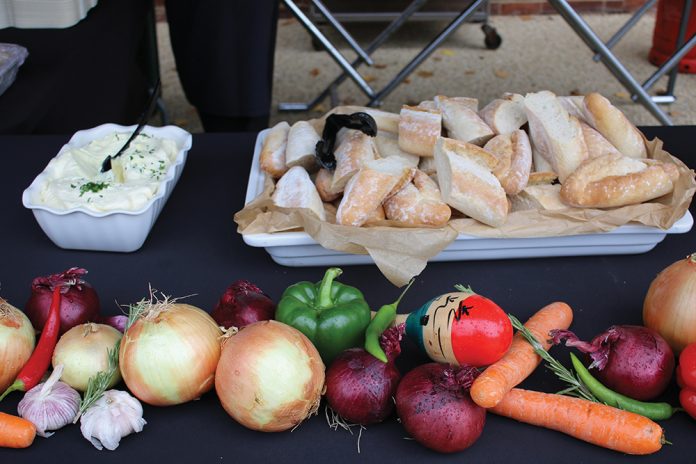Dr Vinod Kumar, of Cranfield University, discusses his pioneering research into bio-renewables, engineering organisms to deliver high-quality chemical products from waste products such as bread.
Biorefineries are the obvious alternative to fossil-based chemicals, a sustainable way forward for the low or zero carbon manufacture of chemicals. Unsustainable sources of fossils are still estimated to be used for more than 90% of global chemical production for application in the cosmetics, food, pharmaceutical, polymers and textile industries.
Biomass — a theoretically inexhaustible resource, obtained through the assimilation of carbon dioxide from the atmosphere into organic materials — represents an important, alternative sustainable feedstock for the continuous production of chemical building blocks.
With an exponentially growing human population, though, the use of edible materials for biorefineries needs to be avoided. The Intergovernmental Panel on Climate Change (IPCC) has warned that the increasing trend for using land to grow bioenergy crops is leading to deforestation, land degradation, increased use of chemicals, water pollution, and serious threats to wildlife and biodiversity. A controversial crop like palm oil — with its significant contribution to carbon emissions — is increasingly being grown as a biofuel. So, the global aviation industry has a convenient solution to carbon emissions through the use of Sustainable Aviation Fuels, but at what cost to agriculture?
In this context, non-edible feedstocks and waste biomass that are rich in renewable carbon — so not competing with food industries — have become very important, offering an attractive, green solution for sustainable chemical production. This route provides a huge opportunity for the chemical industry to adopt a new circular economy model, making constructive use of the vast quantities of waste generated by societies.
The feasibility of a chemical biorefinery is essentially dependent on a continuous and low-cost supply of biomass along with cost-effective pre-treatment and saccharification costs for the extraction of fermentable sugars. The source of the biomass opportunity is in nature of microbes themselves. Microbes are amazing creatures that make use a diverse range of metabolic patterns to be able to survive in different environments — they adapt quickly, they can synthesise and accumulate a variety of molecules, to operate as ‘cell factories’ in themselves.
For our purposes, that means we can engineer the organisms involved to become even more efficient and targeted in their re-processing of materials into useful chemical elements. In turn that means cleaner synthetic methods — an intensification of processes and a way of minimizing waste from materials and producing high value products. Current projects include making bio-based products like xylitol, 2,3-butanediol, itaconic, lactic and succinic acid — all from a variety of waste streams from agro-industrial sectors and supply chain such as sugarcane, brewer’s spent grains, crude glycerol and unconsumed food.
Bread waste is a good example of what’s possible. In the UK, around £20 billion food and drink are wasted every year. A staple food like bread, with its relatively short shelf-life and commercial overproduction, is a major part of that waste. Around 10% of total bread production is estimated to be wasted during the supply chain and in UK households it is the second most waste food products (according to WRAP figures in 2021), equating to 20 million slices wasted every day.
Lab-scale production of biochemicals using low-cost bread waste — a rich source of high-quality fermentable food grade sugars in addition to other nutrients — is as good as pure carbon sources. Bread waste, generally, has a homogenous and consistent composition. The sugars are ‘clean’ as they are devoid of inhibitors, and their recovery is convenient, not involving the need for any harsh pre-treatment processes.
Bread waste has been employed as feedstock for high level production of platform and commercially important chemicals including 2,3-butanediol (BDO), ethanol, lactic and succinic acid. The presence of one/two functional groups make these molecules versatile for chemical transformation and enable their diverse application. For example, lactic acid (LA) has many applications across food, pharmaceutical, cosmetics, food, specialty chemicals, textiles and leather. With the growing demand for biodegradable polymers using lactic acids, the global market value is expected to be $9.8 billion by 2025. Fermentation of bread waste using enzymatic hydrolysate generated ~155g/L LA, 139 g/L BDO and 115g/L ethanol. Plus, all the residues generated during the process generated the process generated substantial amount of biomethane. The extrapolation of results shows that 150-500kg of these products can be manufactured from every one ton of bread waste, depending on starch content.
Bio-renewables are an obvious and practical solution. But while petrochemicals remain cheaper, the transition to a sustainable and circular model is going to be slow and need to be accelerated. The chemicals industry needs to be bold enough to lead change, to establish larger-scale production models with lower costs. In this context, government subsidies to spur industry take-up would make a real difference.










